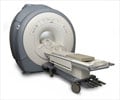A condition called nephrogenic systemic fibrosis (NSF)— which occurs only in patients with advanced kidney disease—is strongly related to use of gadolinium dyes for MRI scans
A "mysterious" condition called nephrogenic systemic fibrosis (NSF)— which occurs only in patients with advanced kidney disease—is strongly related to use of gadolinium dyes for MRI scans, reports a study in the March Clinical Journal of the American Society of Nephrology.
An accompanying editorial identifies specific groups of patients in whom gadolinium exposure should be avoided, at least until more information is available. Meanwhile, another study in the March CJASN reports "remarkable" improvement in an NSF patient treated with a drug called sodium thiosulfate.Dr. Shawn E. Cowper of Yale University and colleagues designed a study to determine the true risk of NSF among kidney disease patients exposed to gadolinium—an element used in MRI contrast agents such as gadodiamide. "NSF is a newly recognized and sometimes fatal condition in which the skin becomes stiff, sometimes immobilizing the patient. In addition, internal organ involvement may be been," explains Dr. Cowper. "To date, NSF has only occurred in people on dialysis or with impaired renal (kidney) function."
The researchers reviewed records of all patients receiving dialysis in the Bridgeport, Conn., area over an 18-month period. Out of 467 patients, three developed NSF—all three had undergone MRI scans using gadolinium within the previous two months. Another 84 dialysis patients received gadolinium but did not develop NSF.
The overall risk of NSF was estimated at 4.3 cases per 1,000 dialysis patients per year—or about 2.4 percent for each time a patient with advanced kidney disease was exposed to gadolinium. "This means that approximately 1 in 40 gadolinium-based MRI scans resulted in NSF in the renal population," Dr. Cowper adds. There was no risk when MRI scans were done without gadolinium. So far, there have been no reported cases of NSF in patients with intact kidney function.
Dr. Preethi Yerram and colleagues of University of Missouri report on another dialysis patient who developed NSF—and raise hope regarding a possibly effective treatment. The patient developed stiffness, pain, and other symptoms of NSF after undergoing numerous MRI scans with gadolinium. Because of her repeated exposure to gadolinium-based MRI scans, the researchers suspected a "dose-related" effect on NSF risk.
The treatments tried for NSF were of little help. However, the patient's condition improved dramatically after she received sodium thiosulfate, which was given to treat an entirely different problem (calcium deposits in blood vessels). "This is an exciting and very encouraging finding that should prompt further research into the use of STS as a potential treatment for NSF," says Dr Yerram.
Advertisement
SRM









